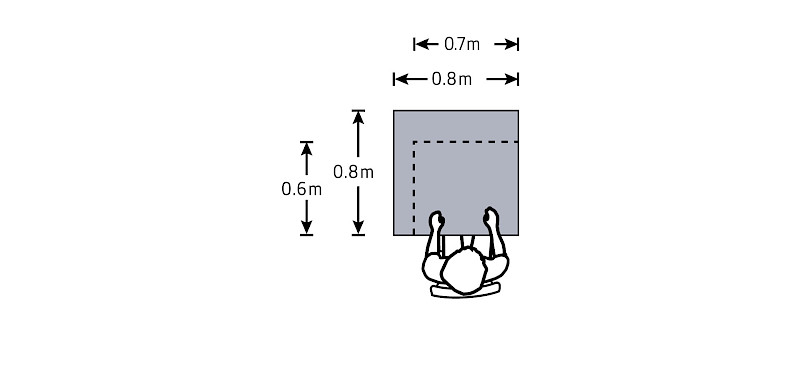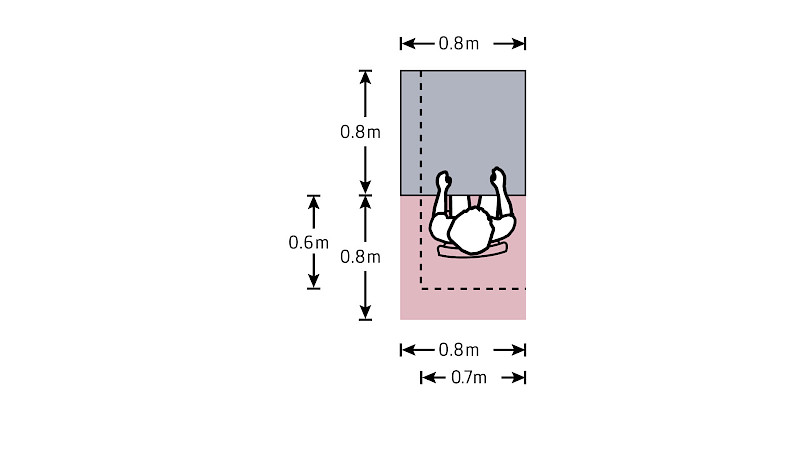Communication areas in the office are becoming increasingly important. The range of requirements and design options is diverse. Legally, these areas fall under the scope of the German Workplace Ordinance (Arbeitsstättenverordnung – ArbStättV). Although the regulations do not prescribe how communication rooms must be designed in detail, a few principles should still be followed to ensure a safe and healthy working environment.
DGUV Information 215–441 on “Office Space Planning” sets out specific requirements for communication areas in meeting and conference rooms, as well as comparable spaces within open-plan and large-scale offices.
All information on this page is based on regulations applicable in Germany. Requirements in other countries may differ.
For areas intended for short-term use – such as visitor seating, standing tables, or break areas – the requirements listed below may not be fully applicable. In such cases, individual solutions may be implemented. However, care must be taken to assess whether such alternatives could pose any risk to employees or visitors. If so, a thorough risk assessment must be carried out and appropriate preventive measures must be introduced.
Table Surfaces
Anyone bringing a laptop, tablet, or paper documents to a meeting will need enough space – especially if they also want to place a coffee cup or a glass of water securely on the table. But even without any documents, participants need enough room to feel comfortable and communicate effectively.
MINIMUM REQUIREMENTS
- The minimum width of the table surface is 80 cm. If fewer materials are needed, 70 cm may suffice.
- For tables used from one side only, the minimum depth is 80 cm. A reduced depth may be acceptable, but it should not fall below 60 cm. For double-sided seating, these measurements should be doubled.
- There must be a legroom space of at least 60 cm wide and 80 cm deep beneath the table. In some cases, this depth can be reduced to 60 cm, but users must still have enough space to move their chair back and stretch their legs.
- Wheelchair users require 90 cm of width to comfortably roll under the table.

User Space at Meeting Tables
If participants are forced to sit rigidly due to insufficient space – unable to lean back or move their chair away from the table – this not only affects comfort but also creativity. Therefore, it’s best to apply the following measurements generously.
MINIMUM REQUIREMENTS
- The user area extends across the full width of the individual meeting seat, and should be at least 80 cm, or in exceptional cases 70 cm wide.
- The minimum depth from the table edge is 80 cm. If the user area is freely accessible from the rear and the legroom depth beneath the table is also 80 cm, the depth of the user area may be reduced to 60 cm.
- In accordance with ASR V3.2, a turning area of 150 × 150 cm must be provided for wheelchair users. This should be positioned as close as possible to the designated seating. Reaching this space must not require more than 3.00 m of reverse driving.

PERMISSIBLE OVERLAPS
The user space may of course be overlapped by the footprint of the chair belonging to the meeting place. Further overlaps should be avoided.
Our Tip: Explore inspiring examples of communication room design in the IBA Forum Showrooms, under the sections Meeting, Co-Area, and Hospitality.
Other Workplace Areas
For more on space requirements relating to furniture placement, functional areas of furniture, and user zones in front of storage units, see our section on Workspace Areas.
We’ve also summarised requirements regarding circulation and escape routes in the section Circulation Routes.




